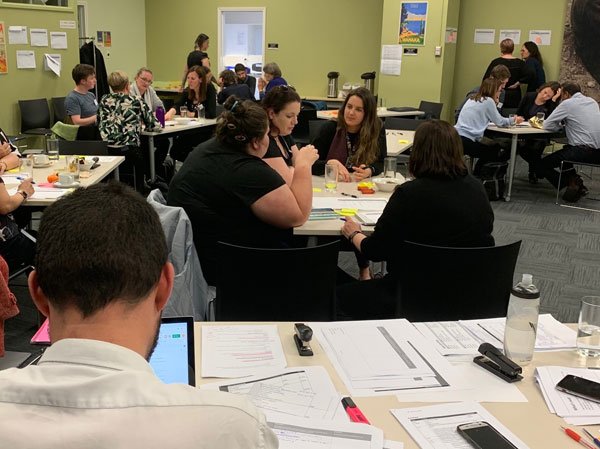Representatives from government organisations and vendors are working together to explore how we can create a common structured content model, that will allow us to create, share and consume standardised digital content.
Representatives from government organisations and vendors are working together to explore how we can create a common structured content model, that will allow us to create, share and consume standardised digital content.
We are running a series of workshops to progress this work. The second of 3 workshops hosted by the Department of Internal Affairs (DIA) was held at Archives on 30 October 2019.
The structured content model is part of wider work that DIA’s Government Information Services (GIS) team is doing to support the development of a common structured content model and a content reuse solution.
This work will help to create a seamless user experience for people when dealing with government.
Purpose of the workshops
The first workshop in early October set the scene for this work and focused on breaking down content into components.
Structured content - Workshop 1
The goal for the second workshop was to come to a common understanding about how we might label and define those components. Having that common understanding of what kind of content belongs in each component is essential if we are ever going to be able to share or reuse content this way.
We gathered a room full of content designers and other web practitioners from across agencies, and started trying to define the components that came out of the first workshop.
What happened
We identified a lot of duplicated components from the first workshop; we needed to work out how many components we really needed.
For example, there was a lot of discussion about the differences between these types of content before 'highlighted content' was suggested as an initial label:
- note before (gotya!)
- call out box
- alert
- tip
- instructions.
We found the label names were harder to agree on than the descriptions. The discussions about the distinctions between the possible labels helped define how many separate components we were really talking about. It turned out we had 3 components:
- Alert — is temporary.
- Highlighted content — should always be displayed.
- Tips — are help content.
Instructions are different again — but we thought that kind of content didn’t need its own component type. Instructions would appear in the context of the topic they were describing.
We repeated this process with more sets of components over the course of the afternoon.

Components were labelled and defined in small groups then collated during the workshop for comment afterwards.
The resulting labels and definitions are being shared with workshop participants to get feedback. We’re a lot closer than we were to a definitive set of components to capture information about government services and how to access them, but we still have a way to go.
If you wish to see the data from workshop 2 and add your comments, please email info@digital.govt.nz and we’ll provide a link.
What happens next
We have one more workshop scheduled, where we will review what we’ve done so far, look at feedback received, and work out how we can progress this work.
Want to attend?
Limited places are still available for the third workshop.
When
Tuesday 19 November 2019
1pm to 4.30pm
Where
Archives, 10 Mulgrave St, Wellington
If you would like to attend or want more information, contact info@digital.govt.nz


